For the neophyte tourist, Paris is primarily the Louvre, the Eiffel Tower, and the famous Notre Dame. There are many more “iconic” places of Paris, known to any tourist and included in the obligatory cultural program. But experienced fans of the French capital know and other unusual and little-known sights of Paris. The atmosphere of these interesting places is also appreciated by filmmakers. To convey the spirit of the real Paris, they often made witnesses and heroes of their films cozy squares and streets of Montmartre, colorful squares, covered galleries-passages, old mansions, covered with a lot of legends….
Where are the most “Parisian” places in the city hiding? Let’s walk around the unknown Paris, walk non-tourist paths and discover quiet corners, unusual sights and interesting places of Paris, which many tourists do not get to.
Interesting places in Montmartre
Let us begin our journey in Montmartre, an area that beckons with a veil of forbidden passions and a rich history of the biographies of the famous inhabitants of the bohemian slums. Montmartre is a 130-meter hill in the north of the modern city. In antiquity there was a Roman settlement here. And part of the capital (and, by the way, its highest geographical point) the area became only in the middle of the XIX century.
Montmartre vineyard
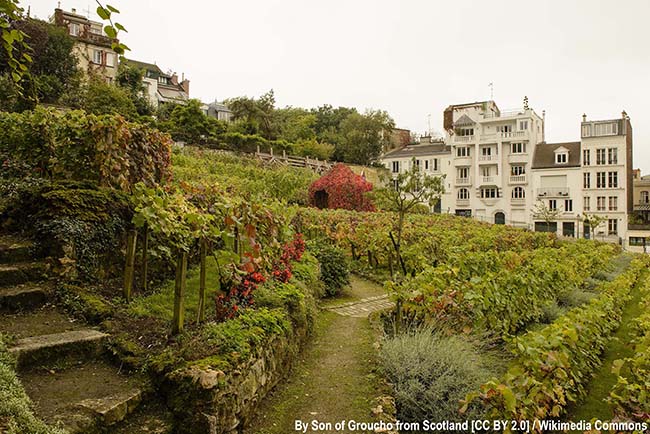
The main occupation of the inhabitants of the suburbs was the production of wines from the vines that abundantly covered the slopes and supplied, among other things, to the royal table. In the nineteenth century, the vineyards were persistently destroyed to make way for building development.
Strictly speaking, there is now one vineyard on the north slope, on the corner of Rue de Sol and Rue Saint-Vensin. It was once defended by the artist and philanthropist F. Pulbeau, who proposed making the private vineyard a public garden. 27 varieties of vines occupy a plot of 15 hectares, allowing the production of about 1,000 bottles of Montmartre wine a year. But the important thing is not the numbers, but the historical atmosphere and the love of the inhabitants of the area for tradition. In the name of which at the beginning of October they organize a wine festival – a week of tastings and sales, fireworks and festivities for the harvesting and harvesting of the new harvest.
Abbess square and Jean-Rictus square
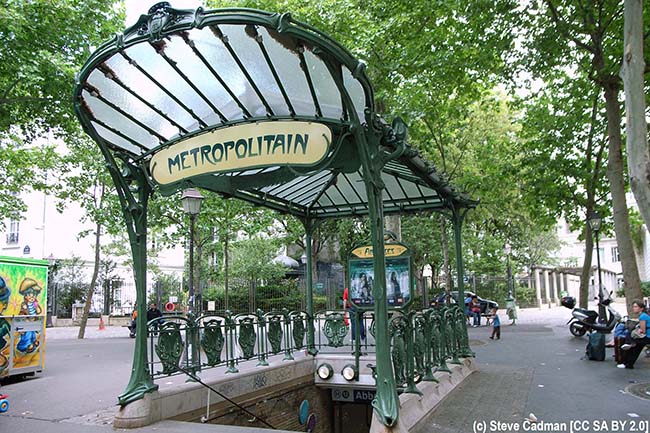
Abbes Square is both a transportation hub and a neighborhood landmark. It is all thanks to the metro station of the same name, the pavilion of which was designed by Hector Guimard, a brilliant representative of Art Nouveau. The interior of the Church of Saint-Jean-l’Evangeliste (Eglise Saint-Jean-l’Evangeliste), which faces the square, is decorated in the same style. The church is also notable for being the first church in the country to be made of concrete and later clad in brick. The architect of the project was Anatole de Bodo.
Next to the square, there has been a square named after the French poet Jean-Rictus for 80 years. The small quiet space attracts not only poetry lovers, but also lovers. Especially since one of the facades adorns the wall with the phrase “I love you,” written in several hundred languages. This unusual landmark of Paris is called the “Wall of Love”.
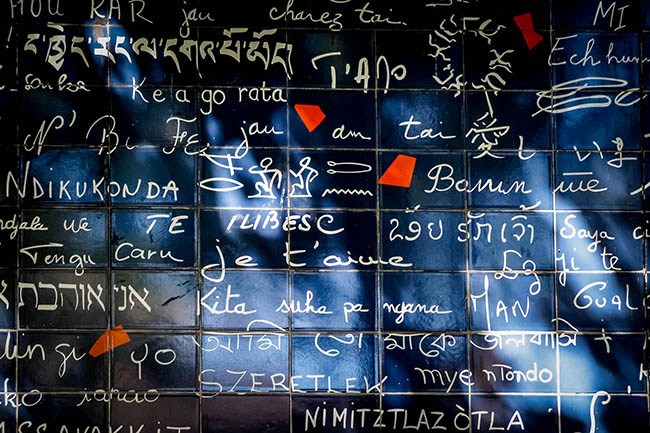
The square of Abbes was immortalized on canvas by the landscape painter and Montmartre native Maurice Utrillo. His name is associated with many places on the map of the area. Let’s go to one of them…
Rue d’Abrevoir in Montmartre
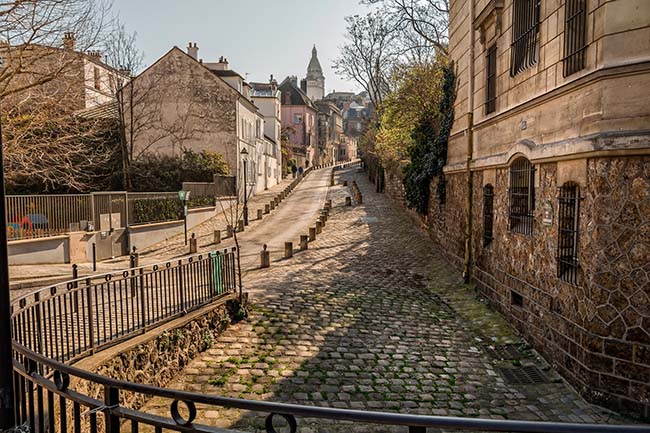
This steep street with its intricate route has more than once become the heroine of films made in Paris and inspired by it. It appears in the romantic comedy “Amelie”, dedicated to an extraordinary girl who is able to perform miracles in our time. The atmosphere of the film is set by quiet streets like Abrevoir, with picturesque mansions, old sidewalks and ivy-covered facades.
Perhaps the most famous house in Abrevoir is at the beginning of the street, the so-called “Pink House”. Made famous by the same Maurice Utrillo. The walls of the building are painted pink. That’s how the artist saw it in the rays of the rising sun, returning with colleagues from another feast. Friends took up the task, and by morning the house was transformed.
And at the end of the street, at the intersection of Rue Girardon and Rue de l’Abreuvoir, at the corner, there is a tiny square named after the famous and beloved French singer Dalida. In a small square you’ll notice her bronze bust with her chest rubbed to a shine – fans of the singer and tourists who come here consider it their duty to rub it.
Walking Over the Wall Monument
Montmartre has always attracted extraordinary personalities, weirdos, unrecognized geniuses and visionaries. One of them – Marcel Aimé – lived in Montmartre for almost half a century. And to this day you can still meet him in one of the squares of the district…
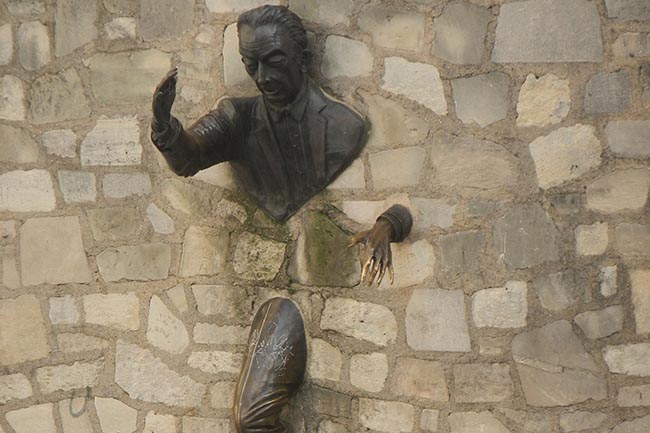
Marcel Aimée is a writer and playwright, author of fairy tales and mystical stories. One of them is dedicated to the accountant Dutiel, who learned the rare gift of passing through walls. It was the unusual plot of this story that became the basis for an interesting monument in Montmartre: the sculptor captured the hero literally emerging from a stone wall. More precisely, partly stuck in this wall… The building and the unusual sculpture are located on the square named after the writer Marcel Aimé. And the author of an unusual sculpture was the friend of the novelist and the famous actor Jean Marais. Many tourists hurry to say hello to the wacky Parisian, passing through the wall, naively believing that it will bring them good luck…
Monument of Saint-Denis
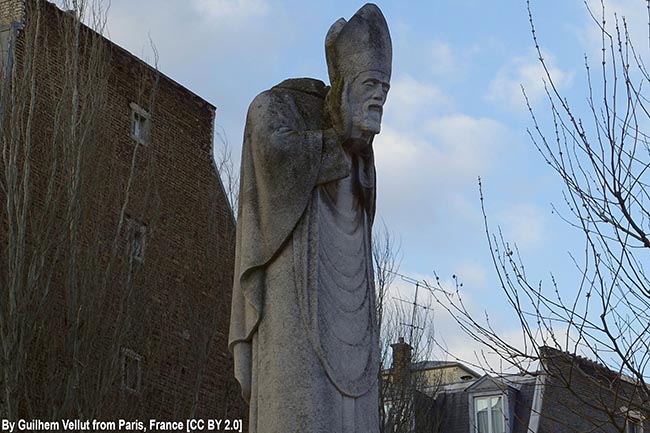
Another unusual statue is located in Montmartre in the square of Suzanne Buisson, just west of Rue Abrevoir. St. Denis (St. Dionysius) is the first bishop of the city, who is said to have been executed in the third century, during the persecution of Christians. According to legend, the execution took place precisely on the Montmartre hill. The beheaded cleric walked several kilometers with his head in his hands to indicate the place where he was to be laid to rest and where the abbey of Saint-Denis would later be formed. It is this dramatic moment that is captured by the sculptor.
Colorful and interesting streets of Paris
One of the most colorful streets in Paris we have already mentioned in the story about Montmartre is Rue Abbrevoir. And here are some more amazing places where you can have a pleasant and interesting walk…
Rue du Chat-qui-Pêche: Paris’ narrowest street
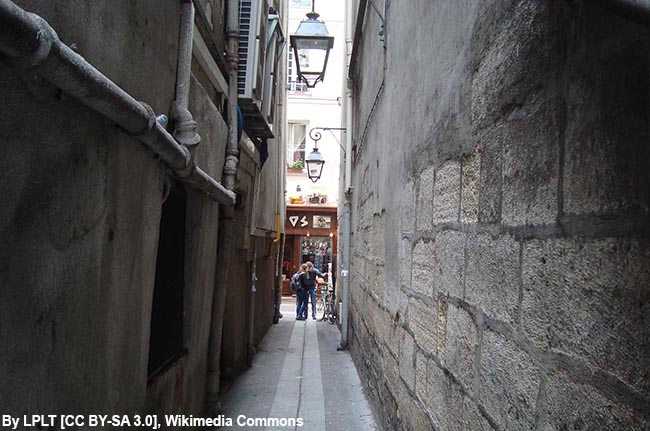
This street runs from Saint-Michel Promenade to Rue de la Huchet in the Latin Quarter and is considered the narrowest in Paris (only 1.8 meters wide). According to legend, it was once home to a large black cat who could catch fish in the Seine with his paw and then bring it to his master, the Canon of Perle. Both the street and the unusual cat have been immortalized in poetry and prose. For example, the Hungarian writer J. Földesz shared the legend that the alchemist master and the fisherman cat were actually one and the same person. They were never seen together, as Perle supposedly transformed himself into a cat.
In addition to this mystical version, there is a more realistic one. The name of the street may be related to the inn and shop, which once stood there under the sign “The Cat Catching Fish”.
By the way, in French there is an expression “to go see cats catching fish” (“aller voir pêcher les chats”), which means “to be easily persuaded by someone else.”
Picturesque Crémieux: Paris’ most colorful street
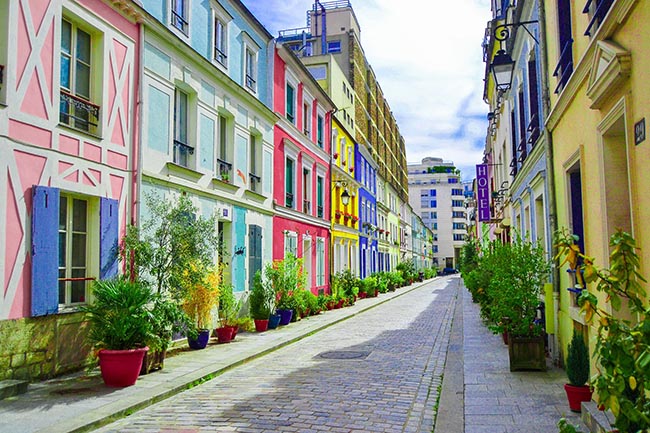
The 144-meter-long street can be called the most colorful in Paris. It is next to the Place de la Bastille, not far from Gare de Lyon, but it is quiet and almost rural. The Kremieu looks simply fabulous: potted flowers on a narrow cobbled sidewalk, cats basking in the sun, and of course colorful two-story houses in the British style, supporting each other under the sides like a bunch of cronies. A favorite pastime of the few guests is to look for a twist in each of the similarly architecturally designed structures: cat, bird, or lizard designs on the facades, carved handles on the doors, and whimsical flowerpots on the windows. You can spend hours doing this, or you can visit the pastry shop or the stores that have opened on the first floors of Little Britain.
